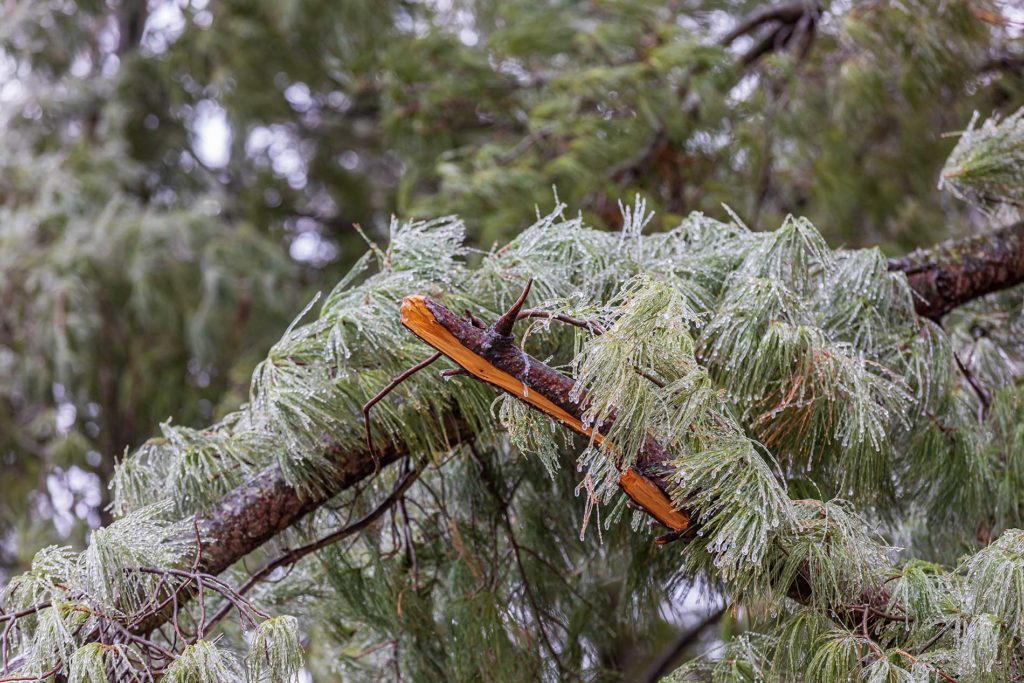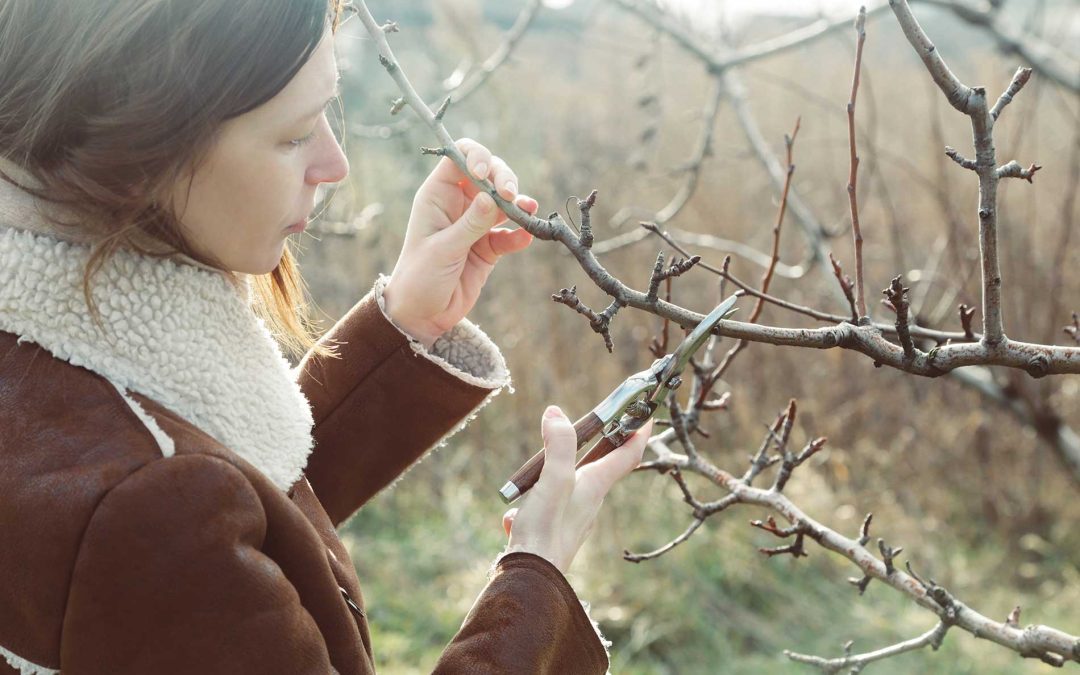There are many benefits to winter pruning to shape and protect the health of your trees, and with heavy snowfalls like we’ve just experienced, pruning broken branches is important for safety. Because cold weather causes dormancy, the winter is typically the best time to prune. This allows the tree to put energy towards producing healthy growth with warmer spring temperatures. It’s also a lot easier to see the shape of deciduous plants in the winter, since their foliage is gone. Pruning helps trees withstand winter storms, high winds, and snow loads and can improve a tree’s air circulation. Pruning cuts heal faster in cold temperatures when insects aren’t around to feed on the fresh sap of pruning cuts as they heal. This keeps your tree free of disease and infestations. Dormant pruning young trees helps develop a strong structure for balanced growth and aesthetics. Trimming fruit trees in winter encourages new productive growth, with the onset of flowers and fruit production in spring. Pruning also opens the tree canopy to let more sunlight in, and as fruit trees can be susceptible to fungal problems, increasing airflow through their canopies by pruning excess branches also helps reduce the issue.
Remove overgrown and smaller branches to increase light and air at the crown of the tree. Sometimes, it’s hard to tell if a tree has dead branches higher up unless you climb it. For this reason, we highly recommend hiring us while you stay safe on the ground. To prune smaller trees yourself, tree pruners with long-reach poles are a helpful tool. Prune out dead and diseased branches, especially those caused by the winter’s snow load and ice buildup. Unwanted lower branches on evergreens should also be removed in late winter. This is an important step to fire-proofing your trees from ground flames and will give you some peace of mind when next summer through fire season.

Our certified arborists specialize in tree trimming and pruning. Call us for an assessment on the health of your trees and we’ll make recommendations for winter pruning and care. Municipal and commercial queries are welcome. We have full WCB coverage and over 40 years of experience in our industry with certified utility arborists on staff.

